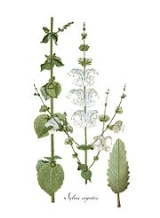
Salvia argentea
Encyclopedia
Salvia argentea is a biennial or short-lived perennial plant
that is native to an area in southern Europe from Portugal to Bulgaria. Its specific epithet, argentea, refers to the silvery leaves.
Flowers appear in spring or summer on 60 to 90 cm (23.6 to 35.4 in) candelabra-like stalks that rise well above the foliage. The inconspicuous white flowers are tinged with yellow or pink. Cutting the flowers before they set seed results in a long-lived plant.
Perennial plant
A perennial plant or simply perennial is a plant that lives for more than two years. The term is often used to differentiate a plant from shorter lived annuals and biennials. The term is sometimes misused by commercial gardeners or horticulturalists to describe only herbaceous perennials...
that is native to an area in southern Europe from Portugal to Bulgaria. Its specific epithet, argentea, refers to the silvery leaves.
Description
S. argentea has a large spread of basal leaves that measure 1 m (3.3 ft) wide and 30 to 60 cm (0.984251968503937 to 2 ft) high. The individual leaves are 20 to 30 cm (7.9 to 11.8 in) long and 15 cm (5.9 in) wide. Both leaf surfaces are heavily covered with silky hairs that give it a wooly appearance. The leaves are soft to the touch, first emerging as a distinctive silvery white and then turning to grey-green after flowering. Cool weather in the fall turns the leaves silvery again.Flowers appear in spring or summer on 60 to 90 cm (23.6 to 35.4 in) candelabra-like stalks that rise well above the foliage. The inconspicuous white flowers are tinged with yellow or pink. Cutting the flowers before they set seed results in a long-lived plant.

